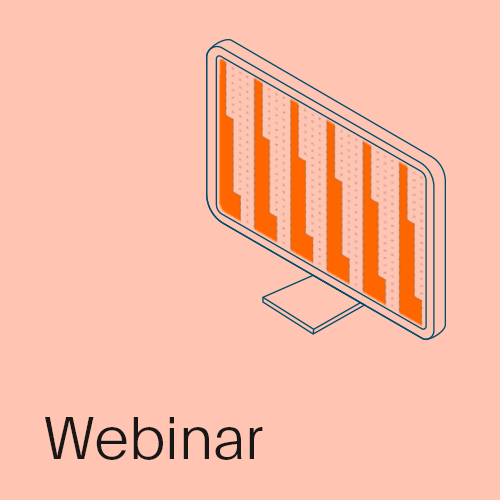Picking the Right Container Monitoring Tool for Your Business
Getting a business online has never been more important, but deploying large-scale applications can be incredibly challenging. Online services like Google Search and Facebook run in “containers” to speed up development and deployment at scale. Not surprisingly, most businesses around the world are now using containers, cutting down deployment times dramatically, among other benefits. However, monitoring and tracking container performance has now become a core issue that many businesses face. Finding the right solution to tackle container monitoring has become a challenge in its own right.
What is Container Monitoring?
Containerization separates development tasks and concerns, allowing developers to focus on their application logic and dependencies while IT operations teams can focus on deployment and management without bothering with application details such as specific software versions and app-specific configurations. This means that developers and IT Ops teams spend less time debugging and more time shipping new functionality to end users. But companies like Google work with billions of containers. The sheer vastness of container systems can be a tremendous challenge, especially when these containers need to be monitored simultaneously and continuously. Isolating issues is critical to delivering the best possible product. Further, this complexity presents new security challenges. That’s where container monitoring tools come in.
Container monitoring is the process of collecting the metrics needed to evaluate and track containerized applications to ensure optimal performance and security. Container monitoring systems provide insights into metrics, logs, and traces, and analyze information to determine if the application is performing properly.
Ongoing monitoring keeps app performance at optimum levels, which directly impacts business by minimizing disruptions and reducing system and application downtime. Container monitoring software tracks container performance by collecting the necessary metrics for peak app performance continuity, including CPU usage and limits, memory usage and limits, and real-time logs, giving the IT team clear visibility of data from various sources, which allows them to identify and respond to issues quickly.
Using these metrics gives insights into container behavior and tracks potential failures leading to better resource allocations and deployments. IT can identify runtime issues sooner and make informed decisions about when to scale in and out by analyzing utilization ratios. Monitoring tools can also help DevOps or systems engineers improve efficiency by automating processes like recognizing anomalous behavior and auto-adjusting to situations by setting rules for alerts.
Key Benefits of Container Monitoring
Container monitoring is an essential part of the infrastructure to assess the status and health of container workloads. Container systems require targeting of moving parts that are often simply too big for human operators to track. A good monitoring system gives insight into how the entire application is performing and allows proactive and quick issue resolution.
Key benefits include:
- Detecting issues early on to avoid system outages
- Providing visibility into information from different layers in the stack
- Analyzing the health of your containers across any cloud environment
- Tuning applications for better performance
- Identifying clusters over or under-allocating available resources
- Creating smart alerts and eliminating false-positives
- Monitoring data for optimal system performance
- isolating and identifying the source of any failure
- Logging events for future analysis
- Reducing operational costs
Choosing the Right Container Monitoring Tool
Picking the right container monitoring tool can make the difference between unreported security vulnerabilities and a smooth DevSecOps workflow that dramatically boosts productivity. As described, the container monitoring tools discussed earlier work better in different situations. Larger businesses may even need to work with two or more tools to monitor different applications. Before deciding on the right container monitoring tool or combination of tools for your business, it is crucial to identify the metrics you need to monitor, define the rules of your alerts, and size up your challenges and needs.
Top Container Monitoring Tools in 2021
Containers were popularized by Docker Inc., and Docker technology has since become the industry standard utilized by the majority of IT and cloud companies. Although there are a wide variety of container monitoring tools, we will focus on a small subset of some of the most popular tools to illustrate the pros and cons of different approaches to container monitoring.
Docker API
Docker API is the official HTTP Web Service API for integrating with Docker. This tool provides basic monitoring of Docker containers. It gathers a range of metrics, including container CPU utilization, amount of memory used and still available, networking information, and disk utilization. When running the command line, Docker API automatically shows a quick data stream with detailed metrics of all containers. While Docker API provides a quick snapshot with an overview of parameters, the data is not stored.
This tool is useful for visualizing detailed metrics and stats, but it doesn´t have the capacity to track or raise alarms. Docker API is recommended for organizations that have their own applications for container monitoring from multiple service providers.
SolarWinds
SolarWinds Server & Application Monitor (SolarWinds) has become one of the most popular container monitoring tools because of its ease of use and holistic solution to monitoring Docker environments. The main dashboard shows a health overview of all Docker containers and tracks key performance metrics such as CPU usage, memory, and uptime. The interface helps identify issues with a quick glance and eliminates the need to dig through log files. The monitor includes current and historical information for easy comparisons.
One of the core strengths of SolarWinds, is that it can monitor the performance of multiple containers and isolate them to detect issues directly from the container layer, which gives it a competitive edge. Another key feature is the ability to set alert rules to be fully automated by setting thresholds to identify anomalies that indicate possible service issues. This helps to avoid false positives and sends automatic alerts when the monitored metric does not behave as expected.
SolarWinds forecasting helps IT teams stay ahead of bottlenecks by recommending when to scale up or down based on usage. This is a highly recommended tool for container and application monitoring and includes a 30-day free trial.
Datadog
Datadog is powerful cloud tool with a user-friendly design that shows detailed metrics such as resource usage and input/output. The information is displayed on customizable dashboards with real-time data that show graphical visualizations. Detailed log data is automatically correlated to highlight any unusual behavior. Datadog also has a robust alert system allowing users to create alerts and define the threshold of alert events, going beyond simply identifying failures.
One of the key features of Datadog is that it can monitor hundreds of cloud services platforms thanks to its containerized environments, which allows it to drill down to the container level. Datadog is recommended for organizations with a mix of containerized applications and cloud
solutions.
Twistlock
Twistlock provides full-stack container and cloud-based cyber security across the entire application lifecycle and integrates with any CI tool. Twistlock gives a detailed overview of applications, components, and security status. Featuring powerful CI capabilities that allow security teams to monitor, detect, and mitigate risks to all containers in their environment with cloud native intelligence.
Twistlock continuously monitors the entire cloud platform with layer 4 and 7 firewalls that are better adapted to the cloud environment and provide application-specific segmentation of microservices to help combat threats. By providing information about runtime deployments and machine learning driven runtime defenses, security teams can define risk scoring specific to their applications and protect the runtime environment.
Other features include being able to “Allow rules” to track abnormal behavior and automatically block any unexpected behavior. Additionally, Twistlock leverages containers to deliver stronger security. This tool is recommended for agile software developers.
Appdynamics
AppDynamics, a Cisco product, is a full-stack AIOps platform that provides greater visibility into application landscapes and the runtime operations. The software collects data from agents installed on the host. It can also work with data collected from Docker API with an extension. An agent detects and registers metrics and reports irregular occurrences to the controller. Performance issues can be quickly addressed with full visibility of end-to-end application performance monitoring.
An essential feature of the Appdynamics platform is that it can easily detect anomalies by automatically calculating dynamic baselines to identify unusual behavior patterns with both self-learned baselines and configurable thresholds that monitor performance metrics. AppDynamics is recommended for businesses that have migrated to the cloud and are looking for all-in-one monitoring solutions.
Sumo Logic
The Sumo Logic app for Docker creates a log for container events over all running containers. The data is integrated into Sumo Logic’s monitoring dashboard, which provides log analytics with actionable insights within seconds, a process that would otherwise require a large team. This tool allows you to automate and perform complex processes with a few clicks.
Sumo Logic can work at any scale with any type of infrastructure and is recommended for organizations of all sizes.
Prometheus
Unlike Appdynamics, Prometheus does not have its own agent. It scrapes data about containers and stores the data on its own database. The local Prometheus storage is a separate system that handles long term storage and offers durability for long-term data. Prometheus metrics are displayed using the Grafana toolkit.
A key feature of Prometheus is that alerts can be configured and based on applied alerting rules. The Prometheus Alertmanager will intercept the alert and forward any observed metrics that are underperforming to a service such as PagerDuty to manage business-impacting incidents. Prometheus is a powerful tool with high analytical capabilities recommended for smaller environments using fewer Docker containers, as it is not the easiest to configure for larger setups.
Additional Resources
If you’re looking for some additional guidance or consultation to make a better-informed decision about your choice of container monitoring tool, PagerDuty is here to help. We work with IT departments from dozens of Fortune 500 companies to assist in various container monitoring processes. Our team can help put together a strategy for identifying the most effective tools for your business needs, both current and project. Choosing the right container monitoring tool can bring tremendous benefits to your business. Get in touch with a PagerDuty representative to learn more about how we can help and try a 14-day free trial today.

Additional
Resources

Webinar
Community MeetUp - Kubernetes Crash Course

Webinar
An Introduction to Containerisation